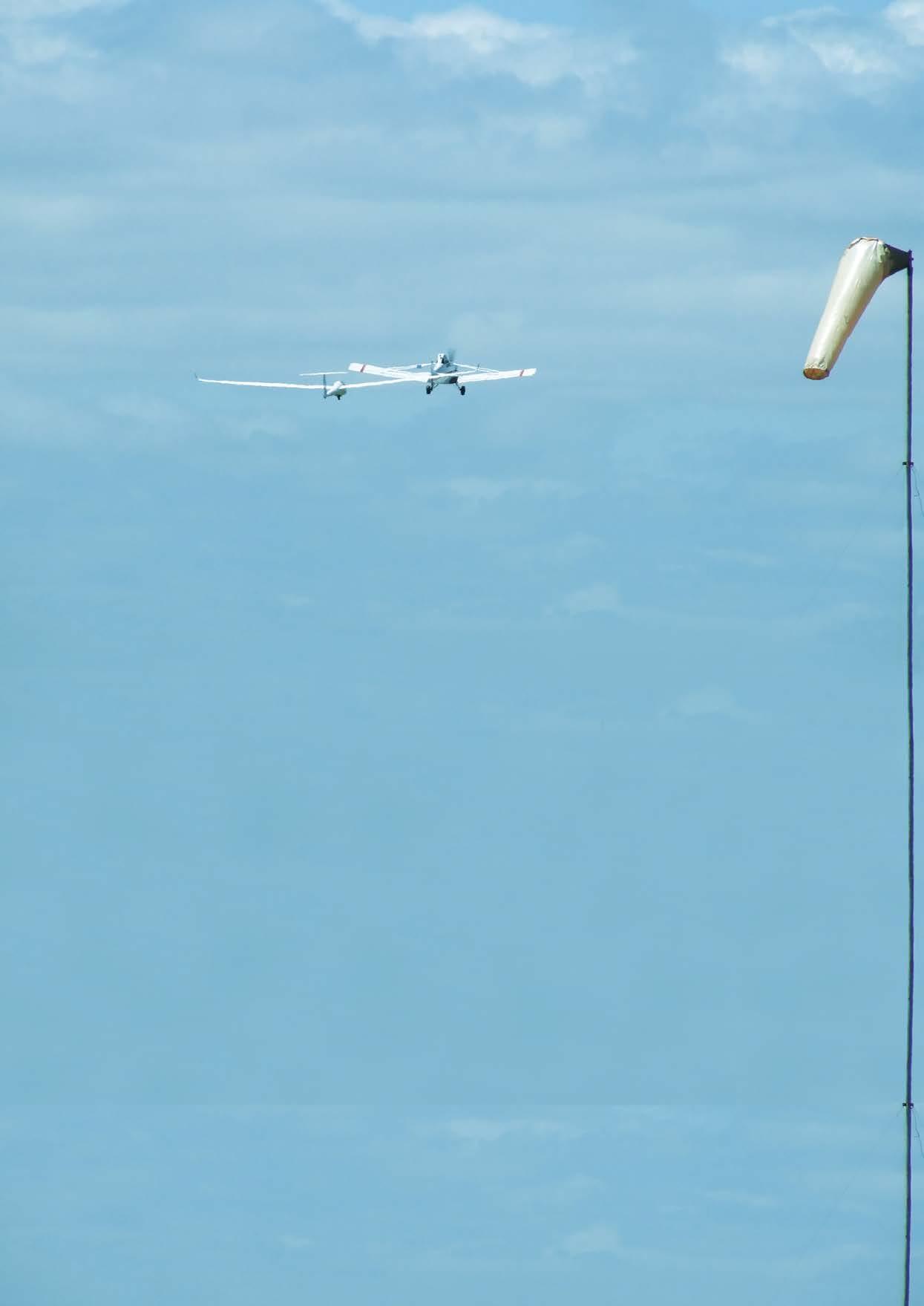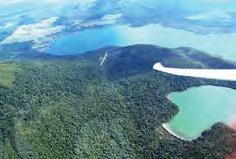
5 minute read
Instructor’s Column The Compass
from SoaringNZ Issue 11
by mccawmedia
THE COMPASS
Ron Sanders is the towmaster, club engineer and an instructor at Gliding Manawatu. This article was originally written for the club newsletter as part of a semi-regular technical feature.
Advertisement
The humble compass is often seen as a relic of the past in the modern cockpit. Glider pilots with constant circling in thermals, VFR flight conditions and reference to GPS equipment, often do not refer to the compass at all. The failure of a compass is rare, its power source being much more reliable than that of all the latest trendy electronic toys. The chances of the Earth’s magnetic field failing you in flight is infinitely more remote than an electrical failure. If all else fails you may well need the reliability of the compass.
The compass fitted to most light aircraft, including gliders, consists of a rotating compass card fixed to a magnet and suspended on a pivot. This active component is suspended in a fluid-filled housing with a transparent front face having a reference mark known as the “lubber line”. The magnet on the compass card attempts to align itself with the local lines of the earth’s magnetic field as the aircraft is turned and this movement is seen as the compass card rotates past the lubber line. The compass fluid dampens the oscillations of the compass, lubricates the pivot, and decreases the pivot bearing load due to the buoyancy of the card in the fluid. These are good reasons to ensure the fluid level is adequate during the glider DI check.
For all its reliability there are a few operational characteristics of the compass we need to be aware of to understand its limitations. These limitations are often referred to as “compass errors”.
These “errors” are different to magnetic deviations caused by external magnetic influences of ferrous materials in the airframe or the influence of electric currents in instruments, radios, cameras and other electronic equipment.
The local lines of the Earth’s magnetic field are not parallel with the earth’s surface except at the equator. At the magnetic poles these lines are essentially perpendicular to the surface. At our latitudes the magnetic field is inclined to the surface. Our compass therefore is constructed with a pivot point above its centre of gravity and often compensated by weighting so that the card will hang level on its pivot. This compensation however is the root cause of the two operational errors we need to be aware of. Acceleration Error
The centre of gravity of the compass is not exactly over the pivot but in the Southern Hemisphere, slightly on the north side of the pivot. Therefore we get an apparent turn when we accelerate on easterly or westerly headings, becoming less until there is no error as we accelerate on northerly or southerly headings. For example, if we accelerate heading east, the heavy north end of our compass will lag behind and the compass card will rotate indicating an apparent turn to the south. A deceleration will cause the opposite affect and an apparent North turn will be indicated. Acceleration on north/south heading produces no error as the pivot and centre of gravity are in line with the direction of flight. Turning Error
When we turn a glider there is a centrifugal force produced on all the airframe away from the direction of the turn. This force also acts on our compass with its off-centre centre of gravity. Once again this affects the compass. As we turn through northerly headings the heavy north end of our compass will cause the compass card to rotate faster than our glider is actually turning and as we turn through southerly headings the compass will rotate more slowly than we are actually turning. As we turn through easterly and westerly headings there is no turning error as the pivot force and the turning forces through the centre of gravity are in line with each other.
To compensate for this turning error, when turning onto a particular heading we must overshoot northerly headings by 30° going through north at a rate 1 turn (180° per min), diminishing to no compensation for east/west headings and then undershooting progressively to 30° for a southerly heading.
Next time you are alone in a thermal with a constant rate of turn, find the compass, pick some features about the NSEW positions and glance at the compass from time to time going through these headings. I trust the apparent erratic performance of the compass may now be forgiven, and you may understand what it is able to tell you.
Always keep your lookout going but it is also valuable to understand what your compass is doing.
National Gliding Championships
CENTENNIAL PARK • TAUPO 2010
Date Contest Days
Practice Day Sun 14 Feb Mon 15 – Fri 26 Feb 2010
Taupo Gliding Club look forward to hosting the next Multiclass Nationals.
TGC are working on many improvements to camping/ caravan sites and providing more onsite facilities, including more water for camping and ballasting and more power supplies. Ablutions and kitchen facilities will be improved with temporary facilities.

Taupo offers all forms of accommodation from camping, backpackers, chalets, motels, hotels and many rental holiday homes. The last would be a good option for families who would like to share. TGC will investigate and advise regarding accommodation.
Please advise your anticipated choice of accommodation. This will help with our planning and availability.
The airfield 1300m by 130m. Has undergone levelling and restructuring on 06 runway and we will easily handle the expected 40-50 entries.
Airspace There are significant improvements to airspace being worked on and these will enhance the tasking opportunities. A recent meeting with Airways Ch/Ch was positive and we await confirmation.
Preparation The team is coming together, we have lots to do and we look forward to hosting you all. We are working on a repeater for our base radios, publicity local and national, incl the Taupo District Council. If you are thinking of coming it would be helpful if you could give us an indication of your intentions, regarding accommodation and special needs. This will assist us with planning.
Camping Grounds, Cabins and Caravan Parks Lake Taupo Top 10 Holiday Park. Centennial Drive Ph 07-3786860 Camellia Court Motel 50 Tonga St. Call glider pilot Ockie Ph 07-3784346 De Bretts Thermal Resort. Hot pools, nice cabins. Ph 07-3788559
Book a bach. Check this out For more local information visit www.bookabach.co.nz www.laketauponz.com
See below a chart of the contest area.

Task Area Te Kuiti – Opotiki – Taihape – Raetihi
Contest Director Roy Edwards has accepted the task with our grateful thanks. Scoring Rob Lyon with Dennis Cook.
We look forward to seeing you in Taupo 2010


Taupo Gliding Club www.taupoglidingclub.co.nz email: gliding@reap.org.nz Clubhouse phone. 07 378 5627










